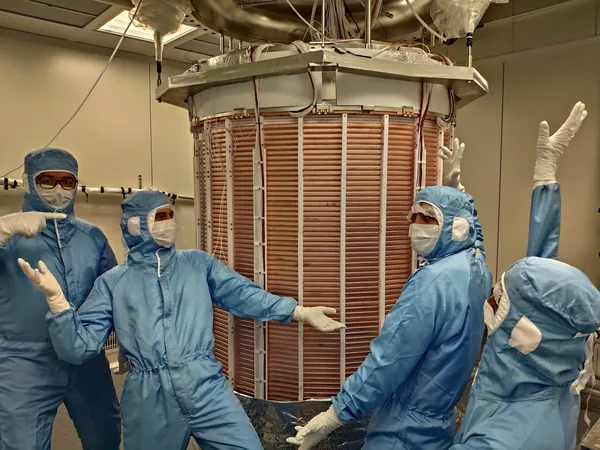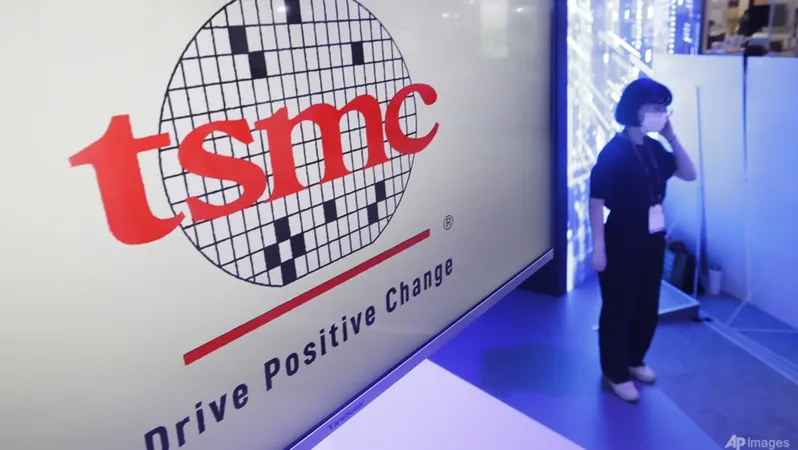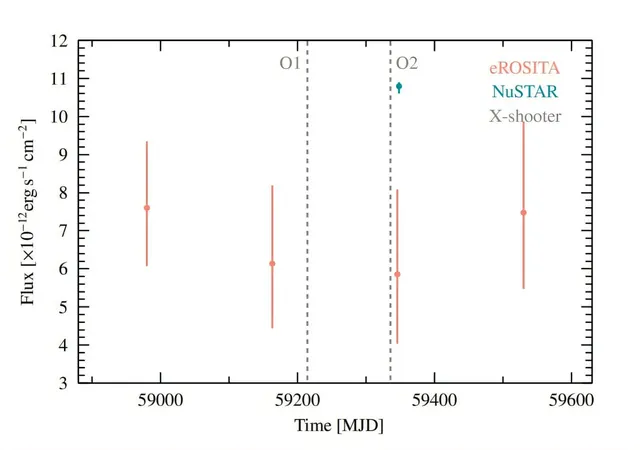
Could 'Neutrino Fog' Derail the Hunt for Dark Matter? New Findings Raise Alarm!
2024-11-12
Author: Nur
In an unexpected twist in the search for dark matter, physicists have reported the potential discovery of a phenomenon dubbed "neutrino fog," which could complicate the detection of this elusive substance. Dark matter is theorized to make up about 27% of the universe's mass-energy content, potentially explaining various astronomical phenomena, including galaxy rotation curves. Conventional theories suggest it consists of weakly interacting massive particles (WIMPs), which interact very little with ordinary matter.
Current detection efforts often focus on large underground facilities, where detectors filled with liquid xenon hope to uncover signs of dark matter. The challenge lies in the fact that these detectors also face interference from neutrinos—another type of weakly interacting particle—produced in copious quantities by the Sun. For context, our Sun emits up to 700 trillion solar neutrinos per square meter every second, all of which typically pass through the Earth with minimal interaction.
Recent papers published in *Physical Review Letters* by both the PandaX-4T experiment in China and the XENONnT experiment in Italy revealed evidence of solar neutrino interactions within their detection systems. Although their findings are still shy of the stringent five-sigma threshold needed for a discovery claim, they nonetheless indicate a worrying trend: as sensitivity increases in dark matter detection technology, the "neutrino fog" may obstruct clear results further down the line.
So, what are solar neutrinos? They originate from nuclear fusion reactions in the core of the Sun. For instance, boron-8 (8B) isotopes decay into beryllium-8 and an electron neutrino through a relatively quick process. While these neutrinos represent a mere 0.02% of solar neutrinos, their presence can create significant noise for detectors aimed at identifying dark matter interactions.
The interactions observed in these experiments are attributed to a process called coherent elastic neutrino-nucleus scattering (CEνNS), where a neutrino interacts with an entire nucleus rather than individual nucleons or electrons. CEνNS was first discovered at a particle accelerator in 2017, but its low-energy signatures make them hard to detect, particularly as recoiling nuclei can yield energy readings as low as 1 keV/c².
Both experiments are configured with liquid xenon systems housed deep underground—1,400 meters below the surface in Italy and 2,400 meters in China—taking advantage of the dense rock above to block cosmic rays and other forms of radiation. The XENONnT experiment recorded 11 distinct CEνNS events after a comprehensive analysis of the incoming data, while PandaX-4T reported 75, attributable in part to its lower threshold for detecting interactions.
Despite their varying results, both teams have measured neutrino flux levels consistent with predictions from standard solar models—about 50 billion neutrinos per square meter per second—reinforcing the notion that the neutrino fog is indeed a significant parameter to consider moving forward.
Going ahead, both collaborations express optimism for improving their sensitivity to 8B neutrino interactions. Enhancements in technology and analysis techniques are expected to yield more precise measurements in the future, with hopes of surpassing the 3-sigma mark needed for concrete evidence.
As scientists push the boundaries of our understanding of dark matter, the unforeseen challenge of neutrino interference adds yet another layer of complexity to this monumental scientific endeavor. Only time will tell how these findings will shape the future of dark matter detection—but one thing is for certain: the quest to unravel the universe’s mysteries is fraught with unexpected challenges.


 Brasil (PT)
Brasil (PT)
 Canada (EN)
Canada (EN)
 Chile (ES)
Chile (ES)
 España (ES)
España (ES)
 France (FR)
France (FR)
 Hong Kong (EN)
Hong Kong (EN)
 Italia (IT)
Italia (IT)
 日本 (JA)
日本 (JA)
 Magyarország (HU)
Magyarország (HU)
 Norge (NO)
Norge (NO)
 Polska (PL)
Polska (PL)
 Schweiz (DE)
Schweiz (DE)
 Singapore (EN)
Singapore (EN)
 Sverige (SV)
Sverige (SV)
 Suomi (FI)
Suomi (FI)
 Türkiye (TR)
Türkiye (TR)